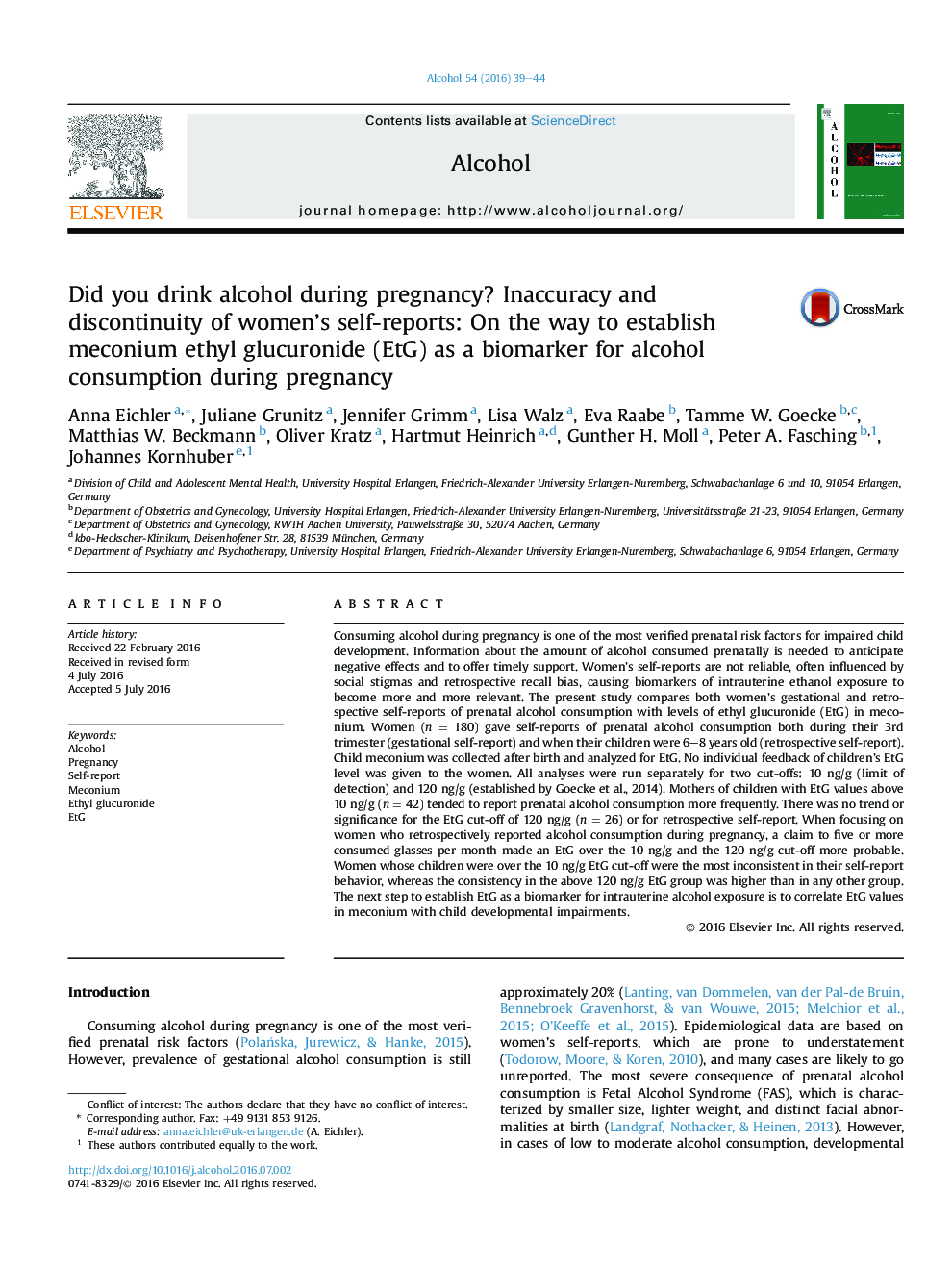| کد مقاله | کد نشریه | سال انتشار | مقاله انگلیسی | نسخه تمام متن |
|---|---|---|---|---|
| 1066802 | 1485975 | 2016 | 6 صفحه PDF | دانلود رایگان |
• Prenatally, EtG positive cases tended to report alcohol consumption more frequently.
• Retrospectively, EtG positive cases didn’t report alcohol consumption more frequently.
• Retrospectively, a claim to ≥5 drinks/month made a detectable EtG more probable.
• In future research clinical measures of child development must also be assessed.
Consuming alcohol during pregnancy is one of the most verified prenatal risk factors for impaired child development. Information about the amount of alcohol consumed prenatally is needed to anticipate negative effects and to offer timely support. Women's self-reports are not reliable, often influenced by social stigmas and retrospective recall bias, causing biomarkers of intrauterine ethanol exposure to become more and more relevant. The present study compares both women's gestational and retrospective self-reports of prenatal alcohol consumption with levels of ethyl glucuronide (EtG) in meconium. Women (n = 180) gave self-reports of prenatal alcohol consumption both during their 3rd trimester (gestational self-report) and when their children were 6–8 years old (retrospective self-report). Child meconium was collected after birth and analyzed for EtG. No individual feedback of children's EtG level was given to the women. All analyses were run separately for two cut-offs: 10 ng/g (limit of detection) and 120 ng/g (established by Goecke et al., 2014). Mothers of children with EtG values above 10 ng/g (n = 42) tended to report prenatal alcohol consumption more frequently. There was no trend or significance for the EtG cut-off of 120 ng/g (n = 26) or for retrospective self-report. When focusing on women who retrospectively reported alcohol consumption during pregnancy, a claim to five or more consumed glasses per month made an EtG over the 10 ng/g and the 120 ng/g cut-off more probable. Women whose children were over the 10 ng/g EtG cut-off were the most inconsistent in their self-report behavior, whereas the consistency in the above 120 ng/g EtG group was higher than in any other group. The next step to establish EtG as a biomarker for intrauterine alcohol exposure is to correlate EtG values in meconium with child developmental impairments.
Journal: Alcohol - Volume 54, August 2016, Pages 39–44
